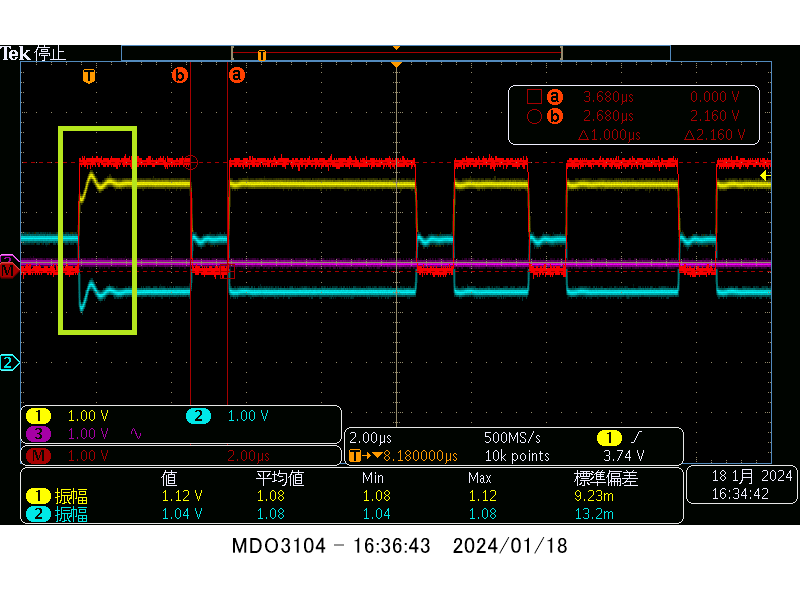終端抵抗120ΩをつけてCAN通信を実施しております。
通信内容としては、「一定時間出力、一定時間出力停止」といった動作確認をしております。
※添付画像は、「一定時間出力」の波形になります。
HとLの差分(赤色)は矩形波となっておりますが、それぞれの波形(青と黄)は、0.4Vp-pのリンギングが発生しております。
しかしこのリンギングは「一定時間出力」の「最初の出力」のみ発生しております。
通信一発目だけリンギングが大きいということはありえますでしょうか?
This thread has been locked.
If you have a related question, please click the "Ask a related question" button in the top right corner. The newly created question will be automatically linked to this question.
終端抵抗120ΩをつけてCAN通信を実施しております。
通信内容としては、「一定時間出力、一定時間出力停止」といった動作確認をしております。
※添付画像は、「一定時間出力」の波形になります。
HとLの差分(赤色)は矩形波となっておりますが、それぞれの波形(青と黄)は、0.4Vp-pのリンギングが発生しております。
しかしこのリンギングは「一定時間出力」の「最初の出力」のみ発生しております。
通信一発目だけリンギングが大きいということはありえますでしょうか?
Hi mitsudome-san,
Welcome to E2E and Thank you for your inquiry.
This is the English E2E forum. Please post your inquiry in English so we can best provide our services.
Regards,
Aaditya Vittal
Hello Mitsudome-san,
I have noticed that you rejected our previous reply. However, this is an English-only forum.
Can you please repost you question in English or create a new thread with the question in English?
Best,
Andrew
I'm doing a "can" test.
What is the reason for this waveform that occurred at the beginning and at the end?
Regards,
masashi mitsudome
Thank you Mitsudome-san,
The ringing on the CANH and CANL lines can happen for a variety of reasons. The most common possible causes are:
However, since CAN is a different communication protocol it is naturally robust to common-mode noise like the ringing shown in the picture. As you can see from your differential waveform, this ringing is canceled out by the differential nature of the transceiver and will not cause any communication errors.
With regards to "Why this happens only at the first transition in the data frame?" The cause of this is most likely a small ground shift on the CAN bus or some capacitance on the line that saturates after the first transition. Regardless, this transient is very small, and it is not an issue for the ISO1044.
Best,
Andrew